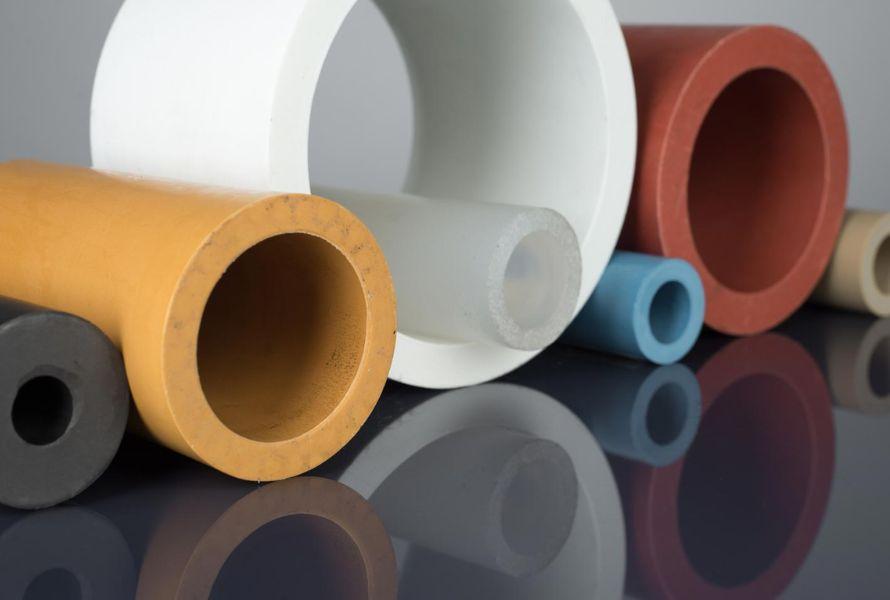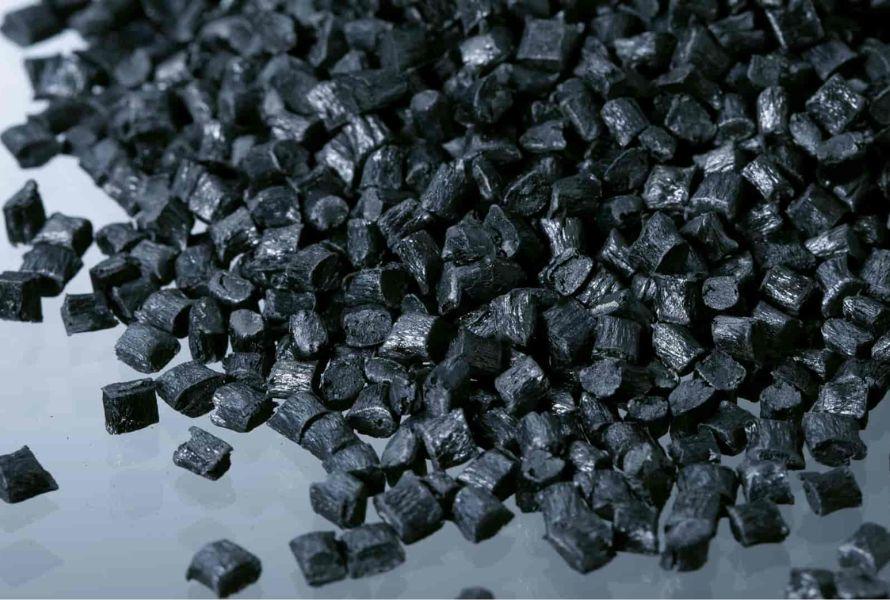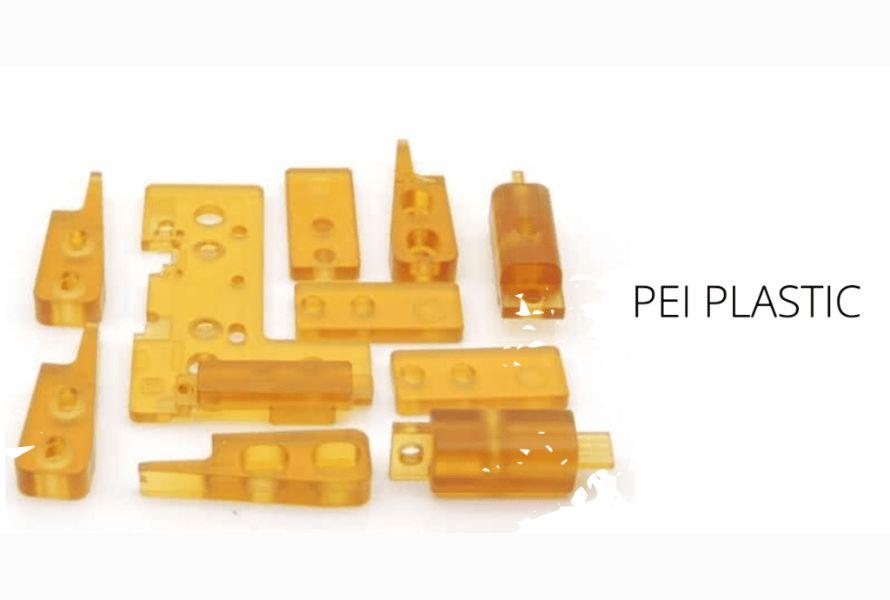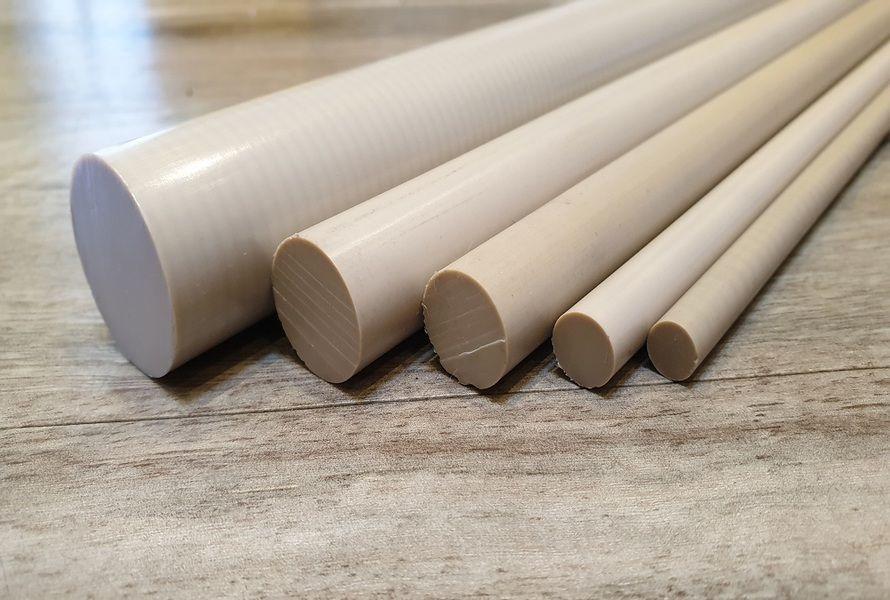1. List of high heat plastic materials for engineering applications
High heat plastic refers to plastics that can withstand high temperatures without deformation or melting. The heat resistance of plastic is determined by its melting temperature, which is the temperature at which the plastic begins to melt. Temperature ranges for different plastic materials, with those having a higher melting temperature exhibiting a greater ability to endure high temperatures. Below is a list of some of the most commonly used high-temperature-resistant plastics.
1.1. PTFE Plastic (Polytetrafluoroethylene)
PTFE plastic (Polytetrafluoroethylene) is a thermoplastic with high durability, heat resistance, corrosion resistance, non-stick properties, and smoothness. PTFE plastic has a melting point of up to 327 degrees Celsius and can withstand temperatures up to 260 degrees Celsius for extended periods.
Applications of PTFE Plastic
PTFE plastic finds widespread applications in various industries, including:
Chemical Industry: PTFE plastic is used for pipes, valves, connectors, storage tanks, and containers in chemical plants and petroleum processing facilities.
Electronics: PTFE plastic serves as an insulating and waterproof material in electronic devices and household appliances.
Mechanical Engineering: PTFE plastic is utilized for slide bearings, bushings, and seals in machinery and equipment.
Medical Industry: PTFE plastic is employed in surgical instruments and dental tools.
Food Industry: PTFE plastic is used for cooking utensils and food storage containers.
Construction: PTFE plastic serves as a waterproof and leak-resistant material.
 PTFE Plastic (Polytetrafluoroethylene)
PTFE Plastic (Polytetrafluoroethylene)
1.2. PPS Plastic (Polyphenylene Sulfide)
PPS plastic is a thermoplastic engineering material with the ability to withstand temperatures up to 250 degrees Celsius. Some specific applications of PPS plastic in various industries include:
Automotive Industry: PPS plastic is used in heat and high-stress components of automobiles, such as gearboxes, supports, shaft bearings, lamp casings, bumpers, fans, exhaust systems, etc. PPS plastic helps reduce the weight of vehicles, enhancing the performance and durability of components.
Electrical and Electronic Industry: PPS plastic is employed in casings, electronic components, capacitors, and electronic parts. PPS plastic protects electronic components from environmental impact, extending the lifespan of electronic devices.
Machinery Industry: PPS plastic is utilized in machine housings and high-temperature, high-stress machine components, such as pump casings, impellers, valves, fans, flow meter components, etc. PPS plastic contributes to increased durability and performance of machinery.
Medical Equipment: PPS plastic is used in surgical instruments and dental tools, ensuring safety and hygiene for medical instruments.
Aerospace Industry: PPS plastic finds application in spacecraft shells and engine casings, reducing weight and enhancing the durability of aerospace equipment.
 PPS Plastic (Polyphenylene Sulfide)
PPS Plastic (Polyphenylene Sulfide)
1.3. PEI Plastic (Polyetherimide)
PEI plastic has the ability to withstand temperatures up to 250 degrees Celsius, coupled with high mechanical strength, excellent chemical resistance, and flame retardancy.
PEI plastic finds numerous applications in various industries, including:
In the Electronics Industry: PEI plastic is used to manufacture casings for electronic devices such as computer housings, phone casings, camera housings, etc. Its high heat resistance protects electronic components from damage caused by high temperatures.
In the Aerospace Industry: PEI plastic is employed to produce aircraft components, such as aircraft nose parts and engine casings. With its high heat resistance and excellent corrosion resistance, PEI can meet the stringent requirements of the aerospace environment.
In the Automotive Industry: PEI plastic is utilized for manufacturing automotive components, such as engine casings and gearboxes. Its high heat resistance, flame retardancy, and high mechanical strength make it suitable for meeting safety and performance requirements in the automotive sector.
In the Medical Field: PEI plastic is used in the production of medical equipment, including surgical instruments and artificial bones. With its high heat resistance, excellent chemical resistance, and non-toxic properties, PEI can be used in various medical applications.
In the Industrial Sector: PEI plastic is employed to manufacture industrial products, such as machine components and household appliances. Its high heat resistance, high mechanical strength, and good corrosion resistance make it suitable for various industrial applications.

1.4. PEEK Plastic (Polyetheretherketone)
PEEK plastic (Polyetheretherketone) is a high-performance thermoplastic known for its high strength, heat resistance, corrosion resistance, and excellent tensile, compressive, and impact strength. PEEK plastic has a melting point of up to 343 degrees Celsius and can withstand temperatures up to 250 degrees Celsius for extended periods.
PEEK plastic is widely utilized in various industries, including:
Aerospace Industry: PEEK plastic is used for heat and stress-resistant components in aircraft and spacecraft.
Automotive Industry: PEEK plastic is employed for heat and stress-resistant components in automobiles and trucks.
Electronics Industry: PEEK plastic is used for insulating and heat-resistant components in electronic devices and household appliances.
Medical Industry: PEEK plastic is utilized for surgical instruments and dental tools.
Chemical Industry: PEEK plastic is used for pipes, valves, connectors, storage tanks, and containers in chemical plants and petroleum processing facilities.
Construction: PEEK plastic is used for panels and coverings.
Energy Sector: PEEK plastic is used for turbines, valves, and pipes in power plants.
 PEEK Plastic (Polyetheretherketone)
PEEK Plastic (Polyetheretherketone)
1.5. PAI (Polyamide-imide)
PAI plastic is a solid thermoplastic synthesized from imide units and amino acids. PAI plastic can withstand temperatures up to 300 degrees Celsius for extended periods without deformation. It exhibits excellent wear resistance, especially in environments with high abrasion.
PAI plastic finds extensive applications in various industries, including:
Aerospace Industry: PAI plastic is used to manufacture high-temperature-resistant components in aircraft, rockets, satellites, etc. The tail shaft is a crucial part of an aircraft, responsible for transmitting power from the engine to the wheels. PAI plastic is employed in the fabrication of aircraft tail shafts due to its high heat resistance, high tensile strength, and mechanical stability.
Electronics Industry: PAI plastic is used to produce electronic components, such as conductive and insulating parts.
Petroleum Industry: PAI plastic is used to manufacture components in petroleum processing plants, such as heat-conducting parts and corrosion-resistant components.
Automotive Industry: PAI plastic is used to manufacture high-temperature-resistant components in automobiles, such as drivetrain components and brake parts.
 PAI (Polyamide-imide)
PAI (Polyamide-imide)





